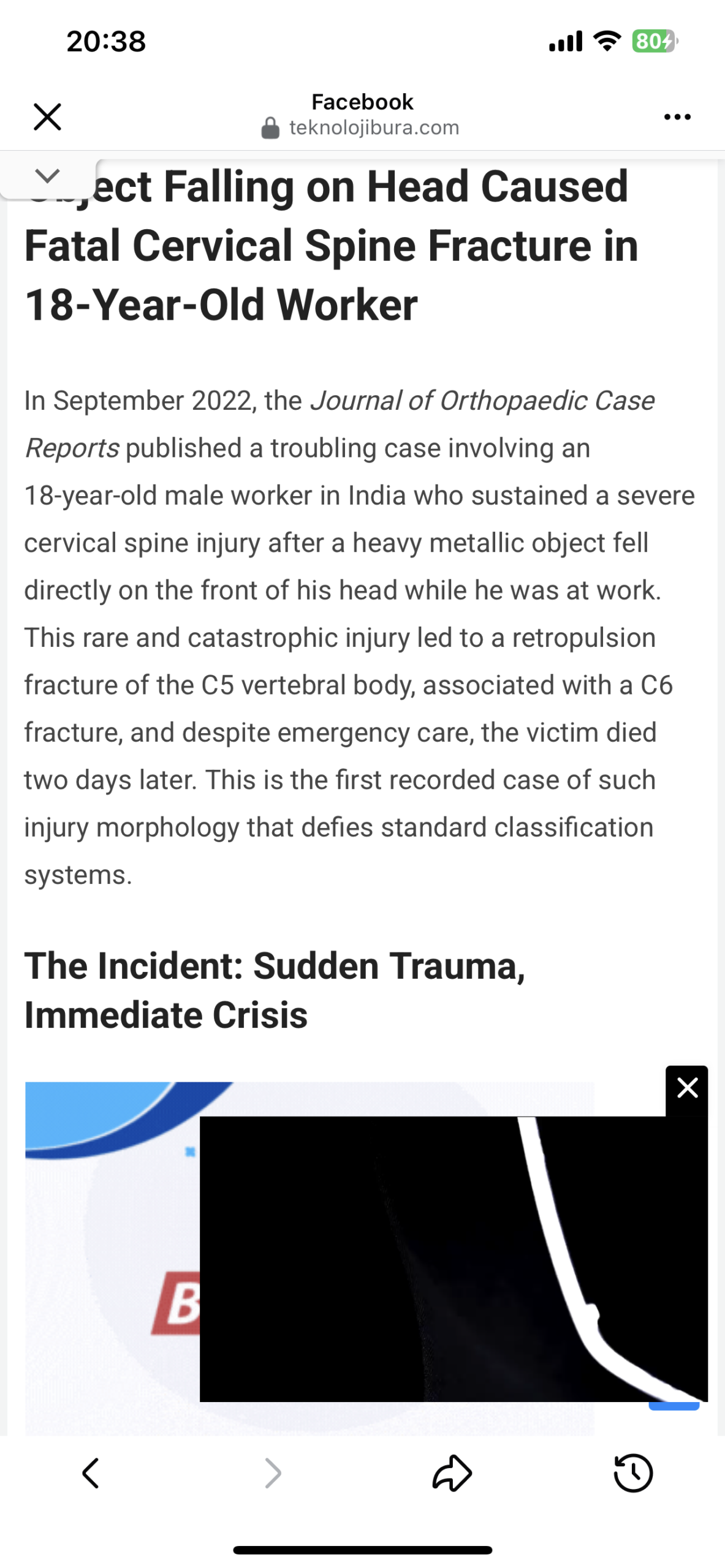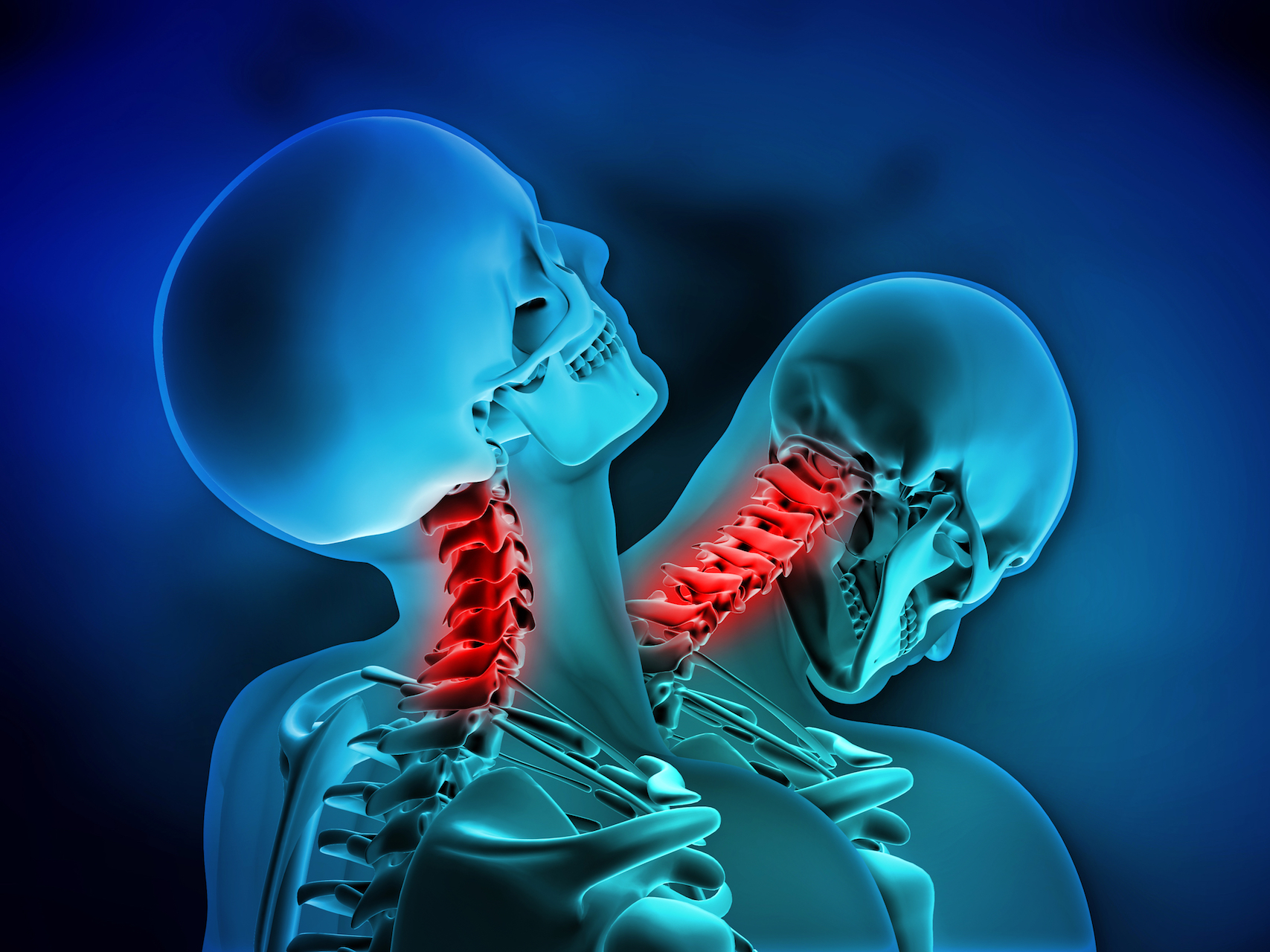In September 2022, the Journal of Orthopaedic Case Reports published a troubling case involving an
18-year-old male worker in India who sustained a severe cervical spine injury after a heavy metallic object fell directly on the front of his head while he was at work.
This rare and catastrophic injury led to a retropulsion fracture of the C5 vertebral body, associated with a C6 fracture, and despite emergency care, the victim died two days later. This is the first recorded case of such injury morphology that defies standard classification systems.
According to the case report, the young man was standing in his workplace when a large, heavy metallic pipe or beam unexpectedly fell from above and struck the frontal region of his head. He lost consciousness, fell into respiratory distress, and went into shock almost immediately upon impact. Emergency medical responders performed rapid intubation and stabilization, applying a rigid cervical collar before transferring him to hospital.

Medical Findings: A Rare and Dangerous Fracture
Once in the emergency department, the patient underwent non‑contrast computed tomography (NCCT) of the cervical spine. The images revealed:
An isolated retropulsion of the C5 vertebral body into the spinal canal.
Notably, no displacement of facet joints or pedicle fractures was seen.
A concurrent fracture in the postero‑superior portion of the C6 vertebral body was also identified.
Such an axial flexion‑compression injury, where the vertebral body is compressed and displaced backward (akin to a “nutcracker” effect), is exceptionally rare and has not been categorized within common classification systems such as Allen & Ferguson, SLICS, or AO Spine ([turn0search3], [turn0search0]). This was the first documented instance of this specific fracture pattern in medical literature.
Clinical Evolution: Stabilization Efforts and Fatal Outcome
Upon arrival, the patient was unstable, suffering from both hemodynamic compromise and respiratory insufficiency. He was intubated and placed on ventilatory support, and cervical traction was applied to reduce pressure on the spinal cord. Despite these interventions, his condition failed to improve and he died two days after the injury. The exceptionally severe injury and early presentation limited surgical options.

Why This Case Is Medically Significant
This case stands out for multiple reasons:
It demonstrates that a single heavy object falling on the head—even from modest height—can exert enough axial force to cause a C5 vertebral body to collapse backward, compromising the spinal canal and leading to rapid neurologic deterioration.
The absence of facet joint displacement and pedicle fracture, yet resulting in retropulsion of the C5 body, makes this an unprecedented injury morphology not represented in existing classification systems, highlighting their limitations ([turn0search3]).
It underscores how even rare injury patterns require attention, both for diagnosis and for guiding future revision or expansion of classification systems.
Understanding the Biomechanics and Clinical Implications
Anatomy & Mechanism: Why the Subaxial Spine Is Vulnerable
The subaxial cervical spine (C3–C7) is structurally mobile, responsible for most neck movement. When force is applied along the head-to-spine axis, vertebral bodies such as C5 can be crushed between adjacent vertebrae. In this case, the downward force created a “nutcracker-like” compression that fractured C5 and drove it backward into the spinal canal, while also creating a secondary fracture at the superior posterior corner of C6 ([turn0search0], [turn0search3]).
Clinical Consequences of Retropulsion Injuries
When a fractured vertebral body retropulses into the spinal canal, it can directly compress the spinal cord, causing paralysis or loss of respiratory control. Management requires rapid immobilization, stabilization, respiratory support, and often surgical decompression. In this patient, despite cervical traction and stabilization, the severe canal compromise and physiological instability made surgical intervention impractical, and death followed within 48 hours ([turn0search3]).
Limitations of Existing Classification Systems
Common systems such as Allen & Ferguson, SLIC‑S (Subaxial Injury Classification System), and AO Spine classify injuries based on features like facet joint dislocation, pedicle fractures, burst fractures, ligamentous injury, and neurologic status. However, this case’s C5 retropulsion with intact facets and pedicles did not align with any predefined category. The report emphasizes that more inclusive classification frameworks are needed to address atypical injury patterns for accurate diagnosis and treatment planning.
Safety Takeaways and Prevention Guidance
Key Lessons for Occupational Safety
Always wear certified safety helmets in environments where objects may fall from overhead.
Never stand or work beneath suspended loads, even briefly.
Secure heavy materials overhead using harnesses, straps, nets, or solid shelving.
Employers must enforce rigorous material-handling protocols and ensure training on recognizing overhead hazards.
At home, ensure tall furniture is anchored and that heavy items aren’t placed unsafely overhead to protect children and others.
Emergency Response Protocols
If neck injury is suspected, do not move the person’s head or neck; maintain their position and stabilize gently.
Apply rigid cervical support if available.
Call emergency services immediately for rapid transport to a facility equipped with imaging (CT/MRI).
Avoid unnecessary movement that may worsen spinal cord damage.
Final Thoughts
This real-world case is a sobering reminder that even a single falling object can cause devastating spinal injury and death within hours. While such extremely rare injury patterns may fall outside existing diagnostic frameworks, they demand attention and underscore the importance of prevention, proper safety measures, and medical preparedness.
Employers, safety officers, and medical professionals should treat this as a cautionary example: reinforcing strict safety standards, updating classification protocols, and improving emergency response can help prevent similar tragedies and improve outcomes when accidents occur.





